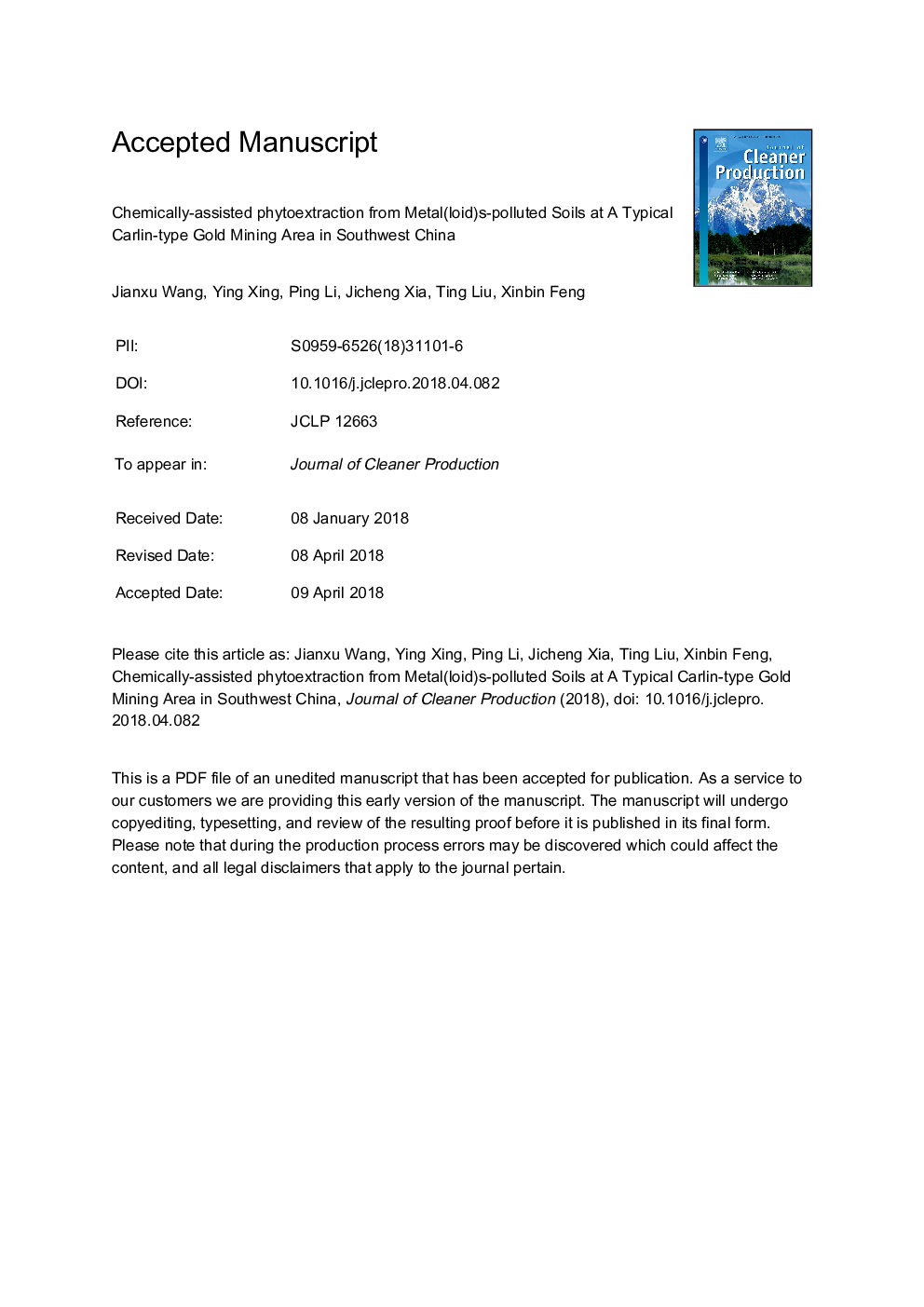| کد مقاله | کد نشریه | سال انتشار | مقاله انگلیسی | نسخه تمام متن |
|---|---|---|---|---|
| 8095231 | 1522064 | 2018 | 27 صفحه PDF | دانلود رایگان |
عنوان انگلیسی مقاله ISI
Chemically-assisted phytoextraction from metal(loid)s-polluted soil at a typical carlin-type gold mining area in southwest China
ترجمه فارسی عنوان
فیتوکساسیون شیمیایی از خاک آلوده به فلز (لید) در منطقه معدن طلای معمولی کارلین در جنوب غربی چین
دانلود مقاله + سفارش ترجمه
دانلود مقاله ISI انگلیسی
رایگان برای ایرانیان
کلمات کلیدی
موضوعات مرتبط
مهندسی و علوم پایه
مهندسی انرژی
انرژی های تجدید پذیر، توسعه پایدار و محیط زیست
چکیده انگلیسی
Laowuchang (LWC) gold mine, located in Southwest China, is a typical Carlin-type gold deposit with the characteristic Au-As-Sb-Tl trace elements assemblage. This study focuses on the mobilization of arsenic (As), antimony (Sb), and thallium (Tl) in polluted soils collected from LWC mining sites and the influence of adding ammonium thiosulfate in different chelant to soil ratio (0, 0.5 and 2â¯gâ¯kgâ1) on the efficacy of As, Sb and T1 phytoextraction by Brassica juncea. The soluble metal(loid)s in the soils after harvesting plants was studied to understand the potential of phytoextraction in managing the risk of metal(loid)s dispersion. Results show that the soils contained relatively high concentration of soluble As (3.6ï½5.5â¯mgâ¯kgâ1) and low concentration of soluble Sb (40ï½128â¯Î¼gâ¯kgâ1) and T1 (6.2ï½10â¯Î¼gâ¯kgâ1). The level of soluble As in the soils is toxic to the environment according to the Chinese environmental quality standard for irrigation water (GB 5084-92). The key results from phytoextraction experiment were that addition of thiosulfate enhanced As and Sb accumulation in B. juncea compared to the control, and the maximum As and Sb uptake in the roots and shoots occurred in the treatment of 2â¯g thiosulfate kgâ1 of soil. However, application of thiosulfate inhibited plant uptake of Tl. The concentration of soluble As in 2â¯gâ¯kgâ1 thiosulfate treatment was decreased significantly compared with the control and initial soils. Compared with the initial soils, soluble Sb was increased both in non-treated (control) and treated soils. However, no noticeable difference was observed between the soils of non-treated and treated plants. Both plant growth and thiosulfate amendment increased the soluble T1 in the soil, when compared to the initial soil. We conclude that thiosulfate-assisted phytoextraction might be used to reduce the environmental risk apparent for LWC soil through reducing the soluble As fractions, while managing the soluble fractions of Sb (compared with control soil). Meantime, further studies are required to manage the T1 risk in the soils at LWC mining site.
ناشر
Database: Elsevier - ScienceDirect (ساینس دایرکت)
Journal: Journal of Cleaner Production - Volume 189, 10 July 2018, Pages 612-619
Journal: Journal of Cleaner Production - Volume 189, 10 July 2018, Pages 612-619
نویسندگان
Jianxu Wang, Ying Xing, Ping Li, Jicheng Xia, Ting Liu, Xinbin Feng,
